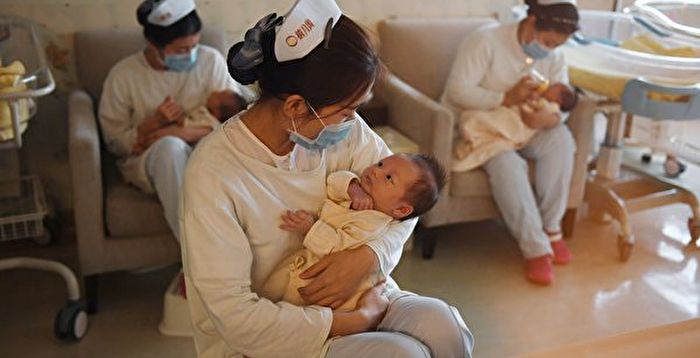[Epoch Times November 24, 2021](Reported by Epoch Times reporter Li Yun) In recent years, the number of births in China has declined year after year, and the CCP’s implementation of the three-child policy is still ineffective. At present, at least 12 provinces and cities in China have issued plans for the next five years to increase assisted reproductive service agencies to help infertile couples with artificial insemination. This move triggered ridicule by public opinion.
According to a report by Lu Media on the 23rd, at least 12 provinces and cities including Shanghai, Hebei, Henan, Tianjin, Guizhou, Anhui, Shanxi, and Shaanxi have issued the “Human Assisted Reproductive Technology Application Plan (2021-2025)”.
Among them, Sichuan Province plans to increase the number of institutions in the next 5 years by 20, Shaanxi Province plans to add 10, Anhui plans to add 10, Shanxi plans to add 4, Tianjin to add 1-2, and Hebei to add within 5 .
According to the relevant “Guiding Opinions” issued by the General Office of the National Health Commission of the Communist Party of China in January, all localities are required to combine actual research to formulate the Province’s “Human Assisted Reproductive Technology Application Plan (2021-2025)”, and carry out the preparation and approval of human assisted reproductive technology .
According to data released by the Chinese Communist Party’s Health Commission, as of the end of June last year, China had 523 “human reproductive assistance medical institutions”. Among them, there are 56 in Guangdong and 33 in Jiangsu. There are 27 medical institutions approved to set up human sperm banks, including 2 in Beijing, Shanghai and Henan, and less than 2 in other provinces.
The main function of human assisted reproductive institutions is to use medical technology and methods to carry out artificial insemination, and IVF is a main business.
Several Lu media quoted an official survey report that between 2007 and 2020, the infertility rate in China rose from 12% to 18%. There are about 50 million people with infertility. About 300,000 test-tube babies are born every year.
Netizens ridiculed the plans to increase assisted reproductive service institutions in many places:
“The family planning’killing office’ has not yet exited the field, and the party state has also promoted the’child-bearing institutions’ assisted reproductive institutions.”
“Before the smoke of family planning has cleared, assisted childbirth will be on the stage. There is no saying, and no explanation is needed. It will let you flow, and it will let you be born without the help of the’surname Jiao’. The key is, All of this is taken for granted and normal. Isn’t this treating people as animals?”
The CCP began to implement the one-child family planning policy in the late 1970s, and compulsory measures such as forced abortions, forced ligation, and fines for super-births throughout the country have brought serious disasters to hundreds of millions of Chinese people, especially women.
In November 2013, the Chinese Communist Party’s official media stated that for more than 40 years of family planning, more than 400 million fewer people were born in China.
The one-child family planning policy has led to a decline in China’s fertility rate and a serious aging of the population. In recent years, the CCP has repeatedly loosened the birth policy and opened the “full two-child” policy in 2016, but the birth rate of newborns has been declining year after year. Official data show that the number of people born in 2016 was 17.86 million; the number of people born in 2020 was only 10.035 million.
On May 31 this year, the CCP announced that the three-child policy was cold, and then various localities successively introduced “incentive policies”, from childcare allowances, parental leave for parents, childbirth expenses into medical insurance, renting public rental housing, etc. to boost three children. Still ineffective.
On November 21, the “China Statistical Yearbook 2021” published on the official website of the National Bureau of Statistics of the Communist Party of China showed that the birth rate in 2020 was 8.52‰, which was the first time that the birth rate fell below 10‰, a record low since 1978, and the natural population growth rate also fell to 1.45‰. Previously, some demographic experts predicted that China’s population will enter a negative growth from 2027 to 2030.
Editor in charge: Gao Jing#
.
